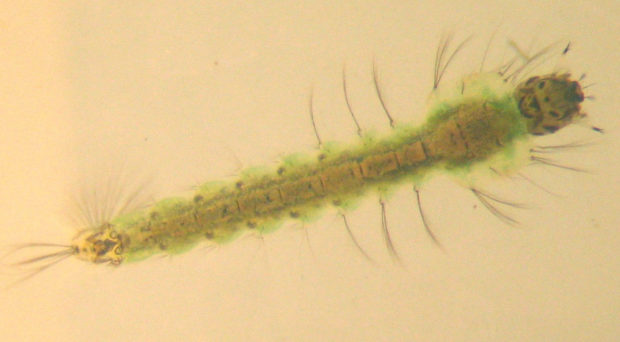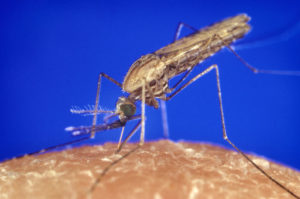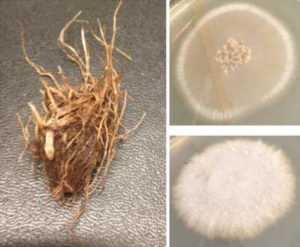
Vector control – an important strategy against malaria
Vector control is an extremely successful approach to preventing the spread of malaria, with insecticide-treated bed nets remaining the most accepted prevention strategy. Other vector control methods include spraying insecticide around human residences, removing any pools of water where eggs can be laid, and adding insecticide to pools containing mosquito larvae.
These methods tend to be based on the application of insecticides. The problem with this is that when insecticides are applied incorrectly, or in low doses, the risk of mosquito-resistance to the chemical increases. Resistance to pyrethroid has already been observed across Africa where pyrethroid-treated bed nets are widely used.
Therefore, it is essential to use a variety of attack strategies at once, to reduce the chance of chemical-resistant mosquito populations emerging. The discovery of a mosquito attractant, cedrol, being produced by fungi inside grass at a natural mosquito egg-laying area is therefore an important piece of information that could be used to manipulate breeding environments and aid vector control.
Life-cycle of mosquitoes

Female mosquitoes lay their eggs on the surface of stagnant water such as ponds or in puddles that have accumulated in buckets, tyres rims, or even car tracks. The eggs float on the surface until they hatch into larvae a couple of days later. The larvae develop just below the water’s surface, constantly feeding on microorganisms and coming up to the surface to breathe. They undergo several moulting stages before becoming pupae and eventually emerge from their pupal skin as adult mosquitoes.
Mosquito attractant- Cedrol
Anopheline mosquitoes appear to display a preference for where they lay their eggs because larval distribution has been found to be non-random. How mosquitoes locate these favoured places could be based on chemical cues. Previous experiments in this area have been carried out at the malaria mosquito breeding site in Kenya through the International Centre of Insect Physiology and Ecology.
These studies found that gravid mosquitoes can be drawn to traps using chemical attractants and preferentially lay their eggs in water infused with soil from a known breeding site, rather than water infused with rabbit-pellets or even with autoclaved soil. These findings opened up the possibility that a chemical is released by something found in the soil that is killed by the autoclave, such as microbes.
A further study performed gas chromatography-mass spectrometry to identify chemicals released from this soil-infused water, one of which was cedrol. The authors found that cedrol was widespread in the mosquito breeding area and that gravid females were more attracted to cedrol-treated water when given a choice.
The source of Cedrol
Lynda Eneh and colleagues addressed the question of what organisms could be releasing this chemical attractant. They hypothesised that a fungus could be producing the cedrol because similar chemicals (within the same ‘sesquiterpene’ class) are known fungal metabolites.
They also hypothesised that the fungi would be located in the rhizomes of grasses

due to previous reports of cedrol being found in grass rhizomes. They looked for fungi in the rhizomes of the grass Cyperus rotundus, which was found at the breeding site. C. rotundus rhizomes were washed free of soil and then infused with water. Aliquots of this infusion were then incubated on agar plates and whatever grew was divided into subcultures and incubated further.
The fungal isolates were identified as Fusarium fujikuroi and Fusarium falciforme and the chemicals released by them were collected and analysed by gas chromatography-mass spectrometry. Cedrol was found to be released by both species of Fusarium fungus with F. fujikuroi also releasing two other similar chemicals.
Implications of this finding
The authors mention that it would be useful to test mosquito attraction to the fungal cultures to confirm that they have legitimately identified a source of the oviposition cue. If mosquito behaviour is indeed influenced by the fungal cultures then these cultures could be used in control strategies against the malaria-spreading insect.
Perhaps it could be used to attract the mosquitoes to man-made ponds, free of most other wildlife, where high doses of insecticide could be regularly applied, reducing the chance of resistance occurring. In accordance with the general theme, this strategy would have to be combined with others to ensure mosquitoes are unable to adapt (to relying on alternative cues, for example).

Comments